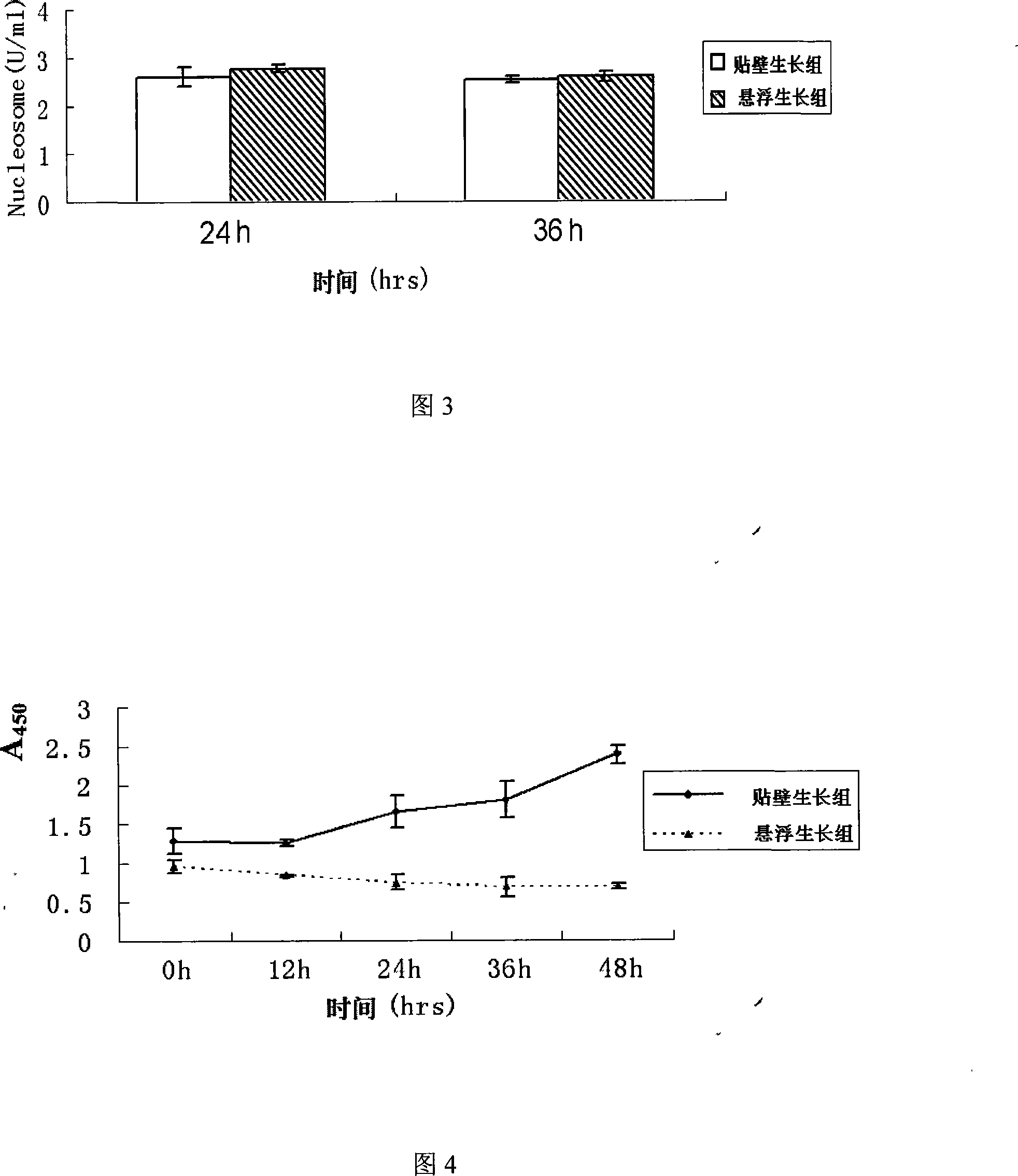Vitro model capable of Dynamic modeling human cancer of liver displace
A dynamic simulation, liver cancer metastasis technology, applied in animal cells, vertebrate cells, tumor/cancer cells, etc., can solve the problem that liver cancer metastasis model is not considered.
- Summary
- Abstract
- Description
- Claims
- Application Information
AI Technical Summary
Problems solved by technology
Method used
Image
Examples
Embodiment 1
[0041] Example 1 Construction of an in vitro model for dynamically simulating liver cancer metastasis process
[0042] 1. Model establishment of anti-cell attachment
[0043] Adherent growth is a prerequisite for the survival of solid tissue cells. Poly-HEMA (purchased from Sigma Company), as an anionic polymer, can be spread on the bottom of the container to prevent the cells from adhering to the wall, so as to construct a cell model in which cells grow in suspension after shedding.
[0044] Dissolve poly-HEMA with 95% ethanol to prepare a solution with a final poly-HEMA concentration of 120mg / ml (i.e. dissolve 2.4g poly-HEMA in 20ml 95% ethanol), shake and mix at 65°C for 8 hours to obtain poly-HEMA HEMA stock solution; then dilute the poly-HEMA stock solution with 95% ethanol at a volume ratio of 1:10 to make a poly-HEMA working solution with a final concentration of 12 mg / ml, store it at 4°C, and set aside; take poly-HEMA Spread the HEMA working solution evenly on the bo...
Embodiment 2
[0056] Example 2 Dynamic Simulation of Reaching Ectopic Reattachment Growth During Cell Transfer
[0057] Metastatic attachment-resistant hepatoma cells mimicking survival in the vasculature for 24 h were harvested and repopulated into poly-HEMA-free cell culture plates at 37 °C in 5% CO 2 Continue culturing in the incubator for 24h-48h, and record the morphological data with a Nikon8700 camera every 12 hours. At the same time, the cells that are about to adhere to the wall again after the suspension are collected at 12 hours and 24 hours of culture, and processed into a single cell suspension, washed with PBS, fixed overnight with 70% ethanol, propidium bromide (PI, Sigma product) Staining, flow cytometry to detect the distribution of cells in each cell cycle.
[0058]Collect cells suspended in 96-well plates for 24 hours, transfer them into 96-well plates without poly-HEMA, add 10ul CCK8 to each group of 3 duplicate wells every 12 hours, mix well, and place at 37°C , CO 2...
Embodiment 3
[0060] Example 3 Detection of apoptosis rate of liver cancer cells in metastatic state
[0061] A poly-HEMA-coated 6-well cell culture plate was prepared, and the 6-well cell culture plate was divided into a suspension culture group and an adherent culture group. Collect the hepatic carcinoma cells suspended and attached to the wall for 24 and 36 hours respectively, and centrifuge at 1000rpm for 5min; every 10 6 Add 1ml of lysis / sample buffer (0.2mM) to each cell, place on ice for 30min; collect the lysate and precipitate of liver cancer cells suspended and adherent for 24 and 36 hours, and centrifuge at 3000rpm for 10min; store at -20°C for more than 18 hours; Take out the sample precipitate at -20°C, dissolve the precipitate with 10 times the volume of lysis / sample buffer; take the sample buffer and add it to the microplate, 100ul / well, seal it with glue strips, and store it at room temperature for 3 hours; discard the supernatant, add 1× wash Wash with the buffer three tim...
PUM
 Login to View More
Login to View More Abstract
Description
Claims
Application Information
 Login to View More
Login to View More - R&D
- Intellectual Property
- Life Sciences
- Materials
- Tech Scout
- Unparalleled Data Quality
- Higher Quality Content
- 60% Fewer Hallucinations
Browse by: Latest US Patents, China's latest patents, Technical Efficacy Thesaurus, Application Domain, Technology Topic, Popular Technical Reports.
© 2025 PatSnap. All rights reserved.Legal|Privacy policy|Modern Slavery Act Transparency Statement|Sitemap|About US| Contact US: help@patsnap.com



